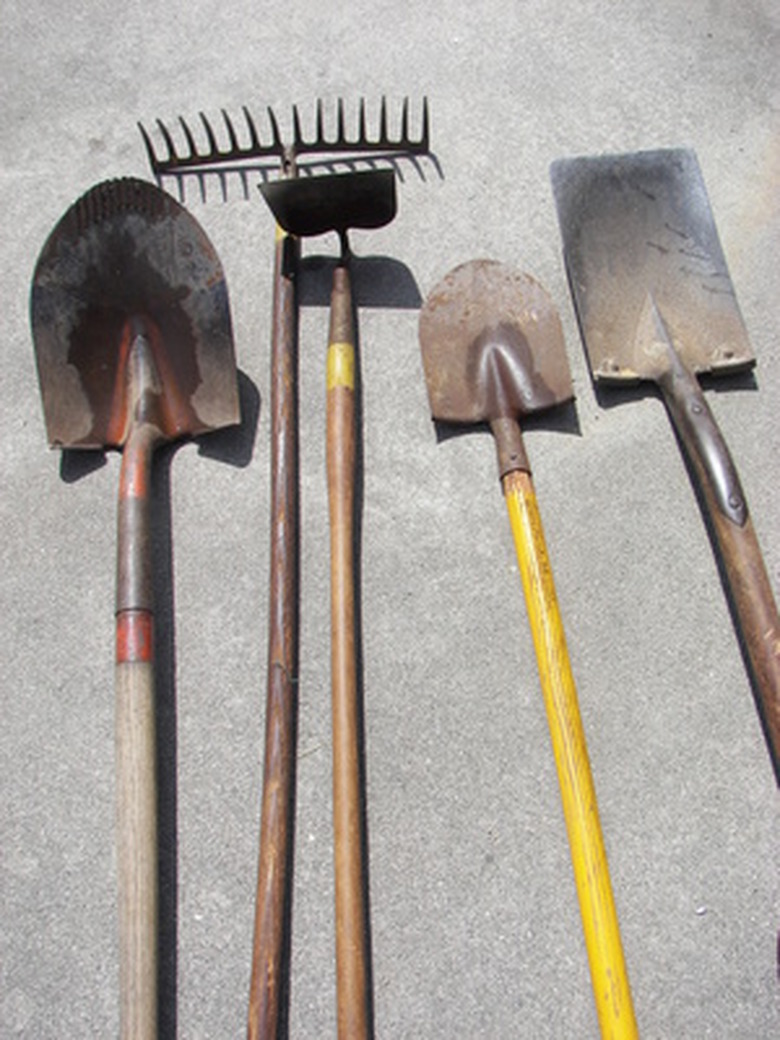How To Use Cotton Burr Compost
Things Needed
- Cotton burr compost (fine-screened and coarse-screened)
- Hoe, shovel or garden tiller
- 1- by 12-inch boards
- Newspaper
- Garden hose
- Plain topsoil
- Garden rake
Expert gardeners and compost enthusiasts often suggest cotton burr compost as an ideal way to enrich garden soil. Left in the fields after harvesting, cotton burrs are the dry husks that surround the fluffy bolls of cotton. Cotton burr compost has the ability to retain lots of moisture, which makes it an ideal amendment for dry soil, such as clay, that leaches water. It also contains plenty of bulk with larger particles that help loosen and aerate dense soil. Look for cotton burr compost (fine-screened and coarse-screened) at garden or lawn supply centers.
Step 1
Spread a 3- to 5-inch layer of cotton burr compost across the garden soil in the spring before planting time. Mix the compost thoroughly with the top 4 to 6 inches of soil, using a hoe, shovel or garden tiller to provide newly-planted garden seeds with an instant boost of valuable nutrients, such as nitrogen, phosphorous and potassium.
- Expert gardeners and compost enthusiasts often suggest cotton burr compost as an ideal way to enrich garden soil.
- Mix the compost thoroughly with the top 4 to 6 inches of soil, using a hoe, shovel or garden tiller to provide newly-planted garden seeds with an instant boost of valuable nutrients, such as nitrogen, phosphorous and potassium.
Step 2
Build custom-size raised flower beds using 1- by 12-inch boards cut to match the desired length and width of each bed. Spread several layers of overlapping newspaper across the opened base of each flower bed to smother any weed or grass growth. Dampen the newspaper with a misting of water from a garden hose. Add equal amounts of cotton burr compost and plain topsoil to the raised beds to provide an ideal growing soil for a variety of annual or perennial flowers.
Step 3
Scoop cotton burr compost around the bases of bedding plants and bushes that you've already planted. Spread it in a 2-inch thick layer as a mulch to discourage weed growth and maintain moisture levels in the soil.
Step 4
Encircle newly planted trees with a 2- to 3-inch-thick layer of coarse-screened cotton burr compost to serve as a mulch to keep weeds from growing and encourage adequate root growth. Spread the mulch out in a circle that matches each tree's drip line (the imaginary circle on the ground that matches the outermost ring of leaves on the tree's branches) for maximum benefit to the trees.
- Build custom-size raised flower beds using 1- by 12-inch boards cut to match the desired length and width of each bed.
- Add equal amounts of cotton burr compost and plain topsoil to the raised beds to provide an ideal growing soil for a variety of annual or perennial flowers.
Step 5
Sprinkle a 1-inch layer of fine-screened cotton burr compost across the surface of potted plant soil. Mix the compost into the top 2 inches of potting soil with your fingers.
Step 6
Add a ¼-inch layer of fine-screened cotton burr compost to the surface of a lawn. Rake the compost thoroughly into the grass with a garden rake to make the nutrients more readily available for the lawn.
References
- "The Experts Book of Garden Hints"; Fern Marshall Bradley; 1993
- "The Complete Compost Gardening Guide"; Barbara Pleasant & Deborah Martin; 2008
- The University of Memphis: Green Campus Initiative
